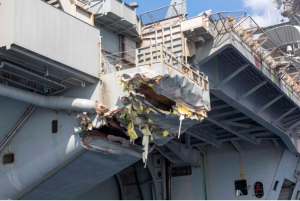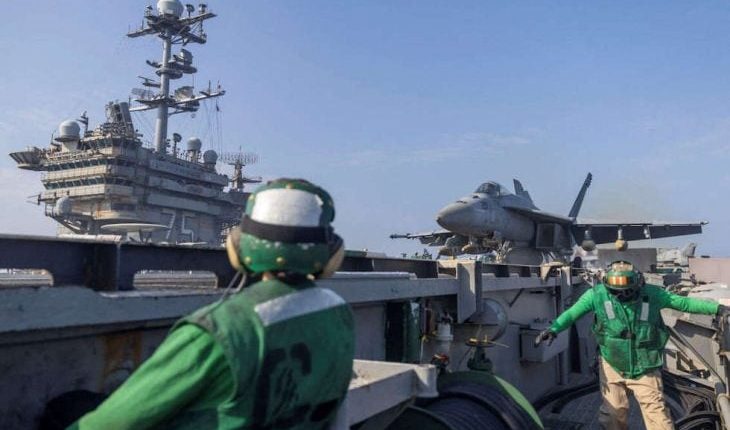Red Sea battle: US technological superiority fails in face of Sanaa attacks
SANAA, June 03 (YPA) -The Red Sea battle between Sanaa and America was not merely a military confrontation but a pivotal moment that reshaped the concept of military influence in the Middle East. It has shown that small countries, with will, tactics, and advanced technologies, are capable of challenging major armies and changing the equations of the regional and international game.
The US Navy acknowledged its involvement in a historic combat operation following the return of the aircraft carrier Truman to its base in Norfolk, Virginia, after receiving heavy strikes from Sanaa forces during a mission to protect Israeli ships and ensure their access to Tel Aviv ports.
A US Navy website revealed that the crew of the Truman and the destroyer Stout celebrated the return despite the loss of three F-18s during the last mission. The statement noted that the US military had used more than 1.1 million pounds of munitions in its 50 days of operations in Yemen.
This statement, accompanying the Truman’s return, highlighted America’s losses in Yemen on both the military and economic levels, confirming that the carrier had sustained significant damage.

The American website “Stars and Stripes” revealed that the aircraft carrier Truman returned with damage, including cracks in its hull and the loss of three F/A-18 fighter jets, each estimated to cost $67 million.
American media confirmed that the Truman encountered unprecedented resistance and was unable to stop the Sanaa forces’ attacks despite the intense bombing.
The US Navy launched more than 1.1 million pounds of munitions but failed to achieve its objectives.
Sanaa forces demonstrated adaptability and continued to launch missiles and drones, effectively signaling the failure of the US mission. Sanaa employed advanced offensive tactics, such as preemptive drone attacks, which disrupted US plans and forced a retreat.
The Red Sea battle demonstrated that technological superiority does not guarantee dominance in “decentralized” warfare that relies on intelligence and surprise tactics. Four US aircraft carriers were forced to leave the region after the attacks, raising questions about the effectiveness of US strategy against unconventional threats.
YPA


